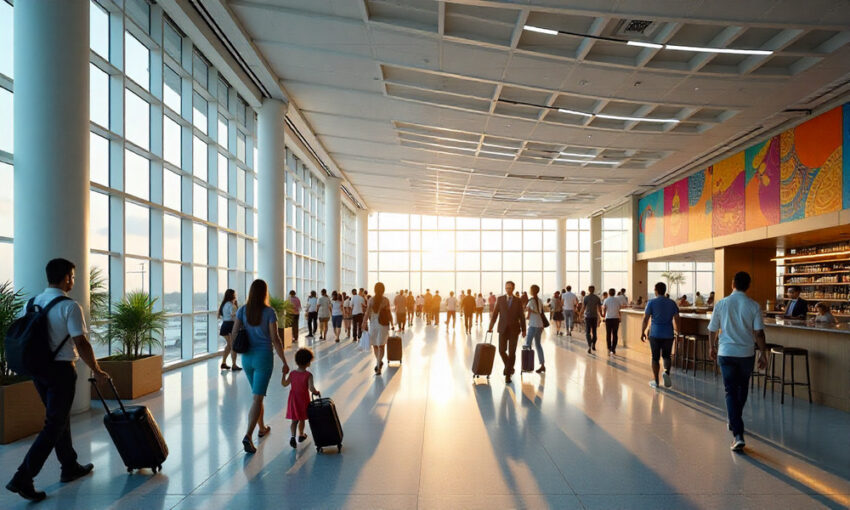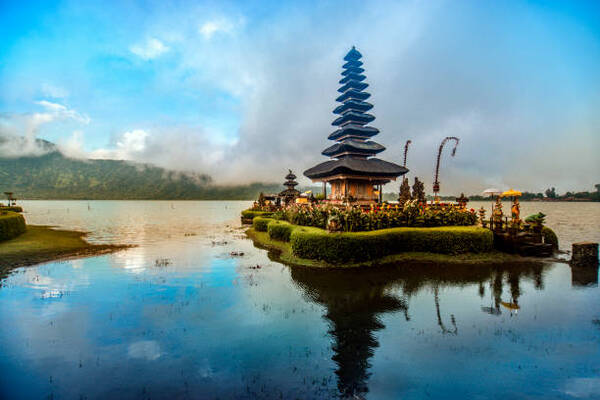Delhi Airport Achieves Unprecedented Growth, Handling Over Six Hundred Seventy Thousand Passengers And Seeing A Thirty-Four Percent Increase In Transit Traffic Between Asia And Europe

Delhi’s Indira Gandhi International Airport has become one of Asia’s fastest-growing transit hubs, recording a strong thirty-four percent surge in passenger traffic between Asia and Europe within a year. The rise, driven by improved airline connectivity and increasing travel demand, shows how Delhi is emerging as a preferred global gateway. With over six hundred seventy thousand transit passengers handled in twelve months, the airport’s upgraded infrastructure and expanding international routes have strengthened its position as India’s leading aviation link between the East and the West.
Delhi Airport Sees Significant Growth in East-West Transit Traffic, Reflecting its Rising Importance as a Global Hub
Delhi’s Indira Gandhi International Airport (IGIA) has witnessed a substantial 34% growth in transit air passenger traffic between Asia and Europe over the past 12 months, as reported by the airport’s operator, Delhi International Airport Ltd (DIAL). The airport, which is the largest in India and one of the busiest globally, handled more than 6.7 lakh (670,000) East-West-East transit passengers during the year spanning from September 2024 to August 2025. This marked a significant increase compared to the 4.98 lakh (498,000) passengers recorded in the previous year.
Key Growth Areas in East-West Transit Traffic
The year-on-year rise highlights Delhi’s growing role as a critical transit point between Asia and Europe. According to DIAL, the East-to-West passenger traffic saw a rise of 34%, while West-to-East traffic surged by 35%. This solid growth indicates that Delhi is becoming an increasingly preferred hub for international air travel, linking Asia with Europe.
The airport’s strategic location, along with its advanced infrastructure and connectivity, has positioned it as a key player in the international transit market. As travel demand continues to rebound across regions, Delhi’s prominence as a gateway for connecting passengers has significantly improved, bolstering its position as one of the most important air transit hubs globally.
Domestic Airlines Fueling the Surge in Transit Traffic
Among the contributing factors to this increase, Air India and IndiGo stand out as the major players, with these two carriers responsible for 67% and 25%, respectively, of the East-to-West transit traffic. The growth of these airlines, both of which have expanded their international routes, has further reinforced Delhi’s stature as a vital link for passengers traveling between Asia and Europe.
This surge in transit traffic aligns with the broader recovery trend observed in the aviation industry, where major Indian airlines are tapping into new international markets and strengthening existing routes. The ease of connections through Delhi, alongside improved flight offerings from domestic airlines, has made the airport a key connecting point for international travelers.
Future Expansion and New International Routes
Looking ahead, the airport is set to become even more connected with international destinations. A major highlight of this expansion is the introduction of Japan Airlines’ new daily service between Delhi and Tokyo Narita, scheduled to begin on January 18, 2026. The airline will operate this route using a Boeing 787-8 Dreamliner, offering approximately 49,000 seats annually for the Delhi-Tokyo route. This new service will further enhance Delhi’s connectivity with Japan, and with this addition, the airport will host four daily flights to Tokyo, making it the only airport in India connected to both Narita and Haneda airports.
This new connection will cater to increasing demand between India and Japan, two countries that have seen a steady rise in business and tourism travel. The addition of Japan Airlines’ service highlights the expanding reach of Delhi’s global connections, offering more options for passengers traveling to and from Japan.
Delhi Airport: A Growing Hub for Global Travel
With a passenger handling capacity of over 100 million annually, IGIA is rapidly cementing its position as a world-class international hub. The airport’s recent growth in East-West transit traffic signals a shift in global aviation dynamics, as more travelers opt for Delhi as a preferred stopover for long-haul flights. As a key airport in Asia, Delhi is leveraging its geographical advantage and robust infrastructure to serve an ever-expanding base of international travelers.
The airport’s strategic importance has been further bolstered by its continuous upgrades and the introduction of new technologies aimed at improving passenger experience and operational efficiency. The availability of world-class amenities, enhanced security measures, and seamless transfer options make Delhi a convenient and attractive transit point for travelers from various regions.
As Delhi continues to grow its global footprint and expand its international services, it is likely to see even greater increases in transit traffic. The introduction of more direct flights to key destinations, along with the expansion of airline networks, will further boost Delhi’s status as a critical aviation hub.
A Bright Future for Delhi as an International Transit Hub
Delhi’s Indira Gandhi International Airport has shown impressive growth in its transit traffic between Asia and Europe, a trend that is expected to continue as new services are introduced and global demand for international air travel rises. With its enhanced connectivity, expanding airline services, and ongoing investments in infrastructure, Delhi is well-positioned to become one of the world’s most important transit hubs in the coming years.
As the aviation industry recovers and passenger flows continue to increase, the role of Delhi Airport as a critical connector between continents will only grow, solidifying its place on the global stage.
The post Delhi Airport Achieves Unprecedented Growth, Handling Over Six Hundred Seventy Thousand Passengers And Seeing A Thirty-Four Percent Increase In Transit Traffic Between Asia And Europe appeared first on Travel And Tour World.
